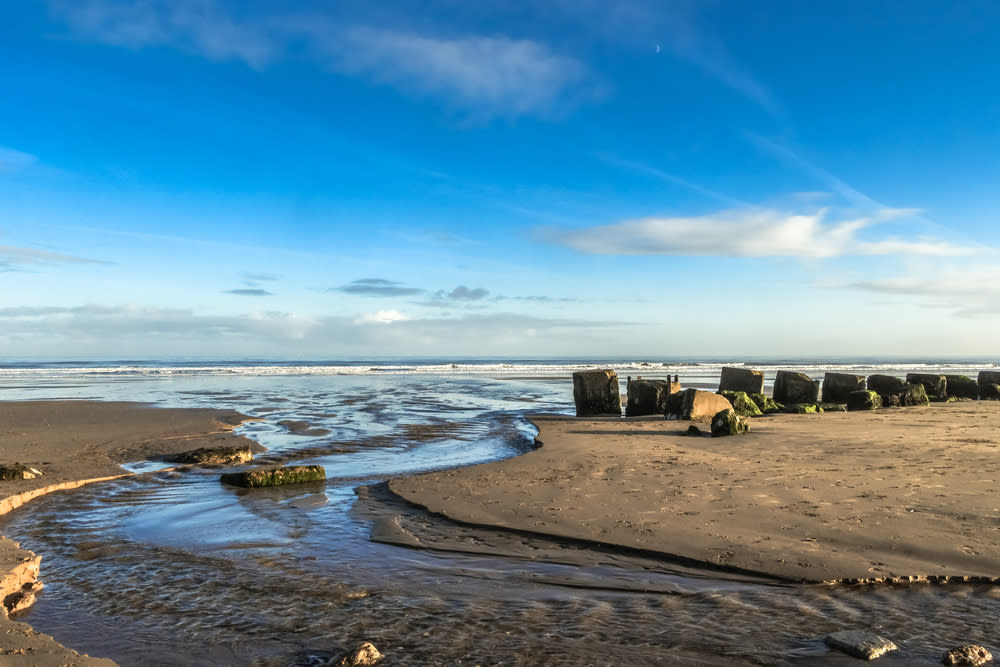More from Bridlington
Main Menu
- 00:00
- 06:00
- 12:00
- 18:00
- 23:00
Bridlington : Next 24-Hour Weather
Today - 17th April 2025
Sunrise 05:55
Sunset 20:07
Tomorrow - 18th April 2025
Sunrise 05:55
Sunset 20:07
Holiday Weather Now
Sorted by popularity:
Updated at 16:00 GMT
-
Temp feels like15°C59°F
-
Length of day14h 12m
-
Pressure29" (1011 hpa)
-
Visibility10 km (6miles)
-
Wind speed19 km/h
Sunrise 05:55
Sunset 20:07
-
Temp feels like:
15ºC (59 ºF)
-
Length of day:
14h 12m
-
Pressure:
29" (1011 hpa)
-
Visibility:
6 miles (10 km)
-
Wind speed:
19 km/h
Bridlington has a mild temperate climate with all four seasons and no extremes of temperature. The seaside resort sits on the UKâs east coast in north Yorkshire. As in all areas of the UK, Bridlington receives a warmer climate than might be expected at this latitude due to the Gulf Stream. The strong influence of Atlantic winds makes it wise to expect the unexpected of British weather.
This stretch of coast is called the Holderness Coast. It was once marshland but was drained to make it suitable for settlement and agriculture. It is now known to be the fastest eroding coast in all of Europe.
Summer, from June till September, is warm with average high temperatures peaking in July and August at 19°C. In June and September the average high sits at 17°C. During the peak months day time temperatures can get into the mid 20s but it rarely gets very hot and night times are generally cool. Sunshine levels are not fantastic with six hours per day at the start of the season reducing to five. However, English weather is notoriously unpredictable, changeable, in fact downright temperamental so most summers will see whole weeks of blazing sunshine surrounded by periods of stubborn grey.
Rainfall levels are moderate and much lower than those found on the west coast. This is due to the westerly direction of the prevailing winds that sweep across the British Isles. This doesnât mean summer is dry; rain falls on almost half of the days in each month. Luckily, summer rain is usually a bit heavier, and so briefer, than at other times of year. The sea temperature might be thought to be warm enough for swimming by some, but certainly not all, at a peak of 15°C in August.
Autumn, in October and November, quickly cools down and welcomes the grey. The average high temperature drops to 14°C in October and 10°C in November. Night times become chilly from the beginning of the season, dropping to an average low of 9°C in October and 6°C in November. While it is windy cloud is not easily cleared and sunshine levels fall to three hours per day in October and two in November. Rainfall remains the same but falls in persistent, light drizzle.
Winter, in between December and February, is cool and a little dismal though not as grey as areas further south. January is the coldest month with an average high of 7°C and an average low of 3°C. It does get down to freezing at night but along the shore frosts are very rare. Snow has been known to fall in January but it rarely settles for long. Generally if precipitation occurs it will do so in the usual irritating drizzle. However, sunshine levels remain at two hours per day for the entire season; in London, December sees only one per day so while two is not fantastic it is twice as good as the capital.
Spring, from March till May, is mild and bright. The average high temperature creeps to 9°C in March, 11°C in April and 14°C in May. Night time lows stay below 10°C for the entire season and youâll always need a jacket. The sun comes out for longer and longer, reaching the annual highest of six hours per day. Rainfall remains moderate but once the showers have finished the clouds often clear away.

















